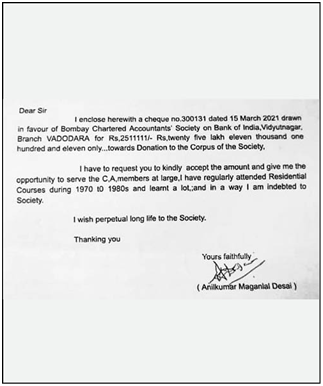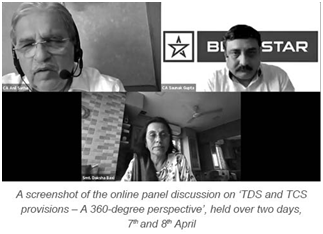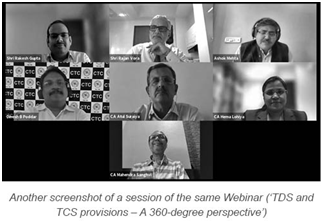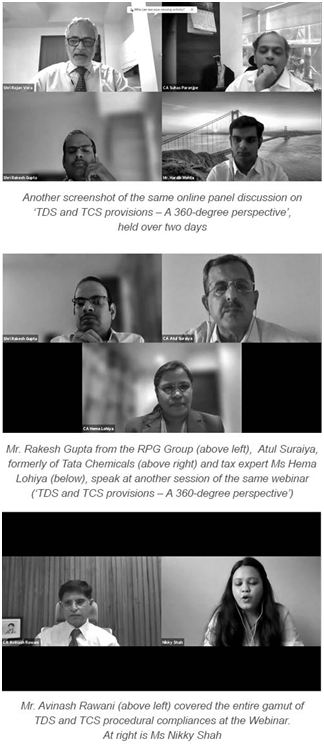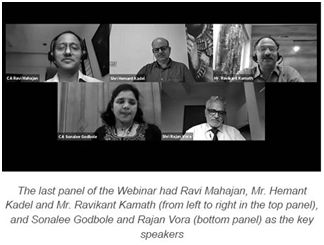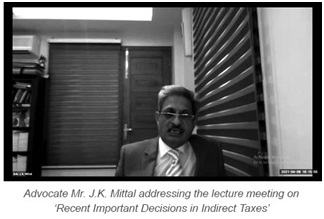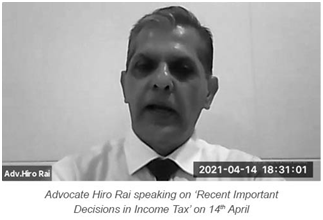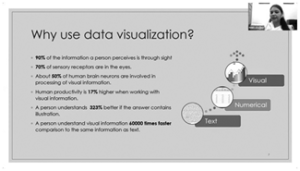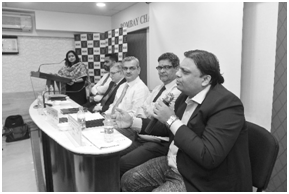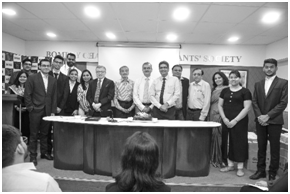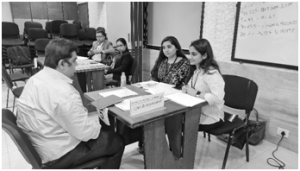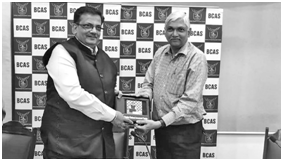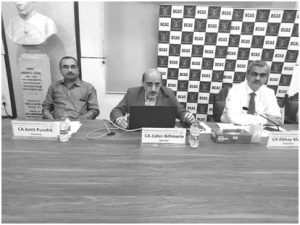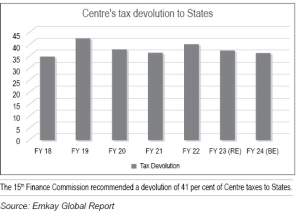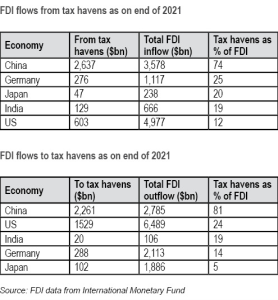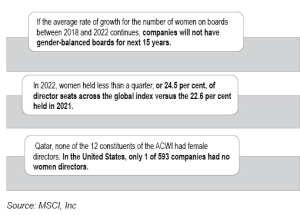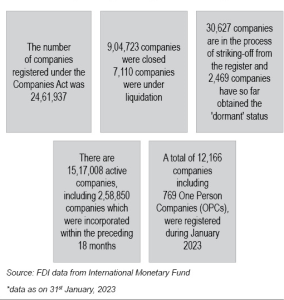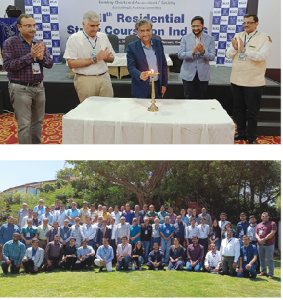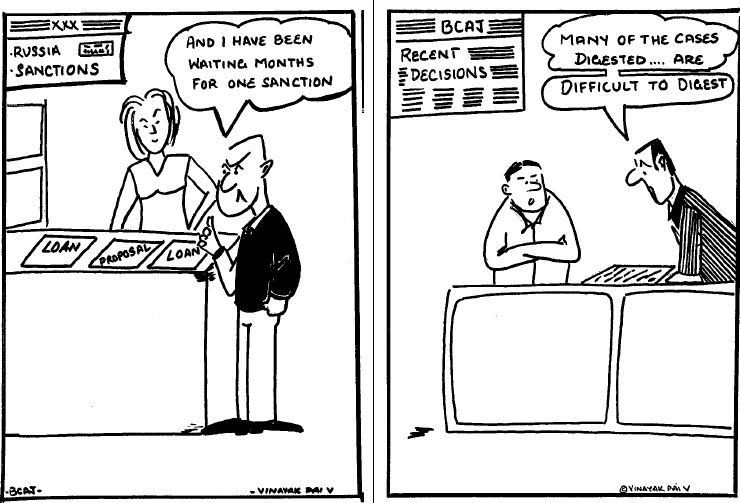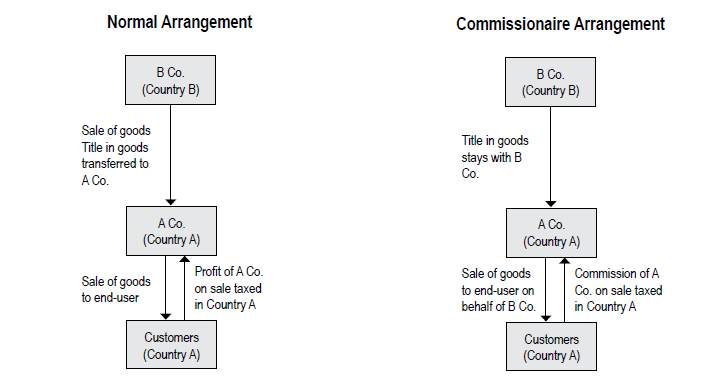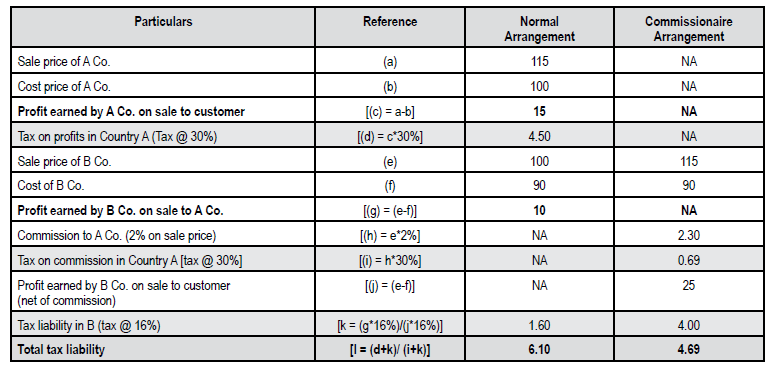|
This article, divided into 4 parts, summarises key amendments carried out to the Income-tax Act, 1961 by the Finance Act, 2023. Due to space constraints, instead of dealing with all amendments, the focus is only on important amendments with a detailed analysis. This will provide the readers with more food for thought on these important amendments. – Editor
|
PART I | NEW Vs. OLD TAX REGIME w.e.f. AY 2024-25
DINESH S. CHAWLA I ADITI TIBREWALA
Chartered Accountants
“The old order changeth yielding place to new and God fulfils himself in many ways lest one good custom should corrupt the world”.
Lord Alfred Tennyson wrote these famous lines several decades back.
In the present context, the old order in the world of Income tax in India is changing. And it is changing very fast. The new order is here in the form of the “new tax regime”. The new regime that was brought in vide the Finance Act 2020 has already been replaced now by a newer tax regime vide Finance Act 2023.
This article aims at simplifying the newest new tax regime for readers while comparing it with the erstwhile “old” regime.
I. APPLICABILITY AND AMENDMENTS
The Indian Government has introduced an updated new tax regime that will come into effect from AY 2024-25. This new regime can be exercised by Individuals, HUF, AOP (other than co-operative societies), BOI, and AJP (Artificial Juridical Person) under Sec 115BAC.
This new regime is a departure from the erstwhile regime that has been in place for several decades.
The 5 major amendments that affect the common man are:
1. Rebate limit increased from Rs. 5 lakh to Rs. 7 lakh;
2. Tax Slabs updated to 5 slabs with new rates (as given below);
3. Standard deduction for salaried tax payers would now be available even under the new regime;
4. Reduction in the top rate of surcharge from 37% to 25%, bringing the effective tax rate to 39% as compared to the erstwhile 42.74%;
5. Leave encashment limit for non-government salaried employees enhanced to Rs. 25 lakhs.
II. NEW SLABS & RATIONALE
New Tax Regime (Default Regime, w.e.f. AY 2024-25)
As per the amended law, the new regime has become the default regime w.e.f. AY 2024-25. Any taxpayer
who wishes to continue to stay in the old tax regime will have to opt-out of the new regime. In the original avatar of the new tax regime, the situation was exactly the opposite whereby the old regime was the default regime and anyone wanting to opt for the new regime had to do so in the ITR or by way of a separate declaration in case of persons having business/professional income.
The rationale behind the tweaks in the new tax regime is that it is expected to benefit the common-man with 20% lesser tax out-flow due to lower tax rates and streamlining of the tax slabs, when compared to the old regime. The catch here is that taxpayers will have to forego many investment-based deductions and exemptions vis-à-vis the old regime except the following:
1. Standard deduction of INR 50,000 under Sec 16,
2. Transport allowance for specially abled,
3. Conveyance allowance for travelling to work,
4. Exemption on voluntary retirement under Sec 10(10C),
5. Exemption on gratuity under Sec 10(10D),
6. Exemption on leave encashment under Sec 10(10AA),
7. Interest on Home Loan under Sec 24b on let-out property,
8. Investment in Notified Pension Scheme under Sec 80CCD(2),
9. Employer’s contribution to NPS,
10. Contributions to Agni veer Corpus Fund under Sec 80CCH,
11. Deduction on Family Pension Income,
12. Gift up to INR 5,000,
13. Any allowance for travelling for employment or on transfer.
The tax slabs under the new regime under Sec 115BAC(1A) are as follows:
| Total Income |
Tax Rate |
| Up to 3 lakh |
Nil |
| From 3 lakh to 6 lakh |
5% |
| From 6 lakh to 9 lakh |
10% |
| From 9 lakh to 12 lakh |
15% |
| From 12 lakh to 15 lakh |
20% |
| Above 15 lakh |
30% |
Note: Surcharge and Cess will be over and above the tax rates.
Old Tax Regime
The old regime continues to be available to the taxpayers but, as mentioned earlier, they must now opt-in to be covered under this regime. Any taxpayer who has been claiming investment-based deductions may continue to opt for this regime, and may switch back & forth between the new regime and old regime (except for persons with income chargeable under the head “Profits and Gains of Business or Profession” (PGBP) as per their choice, on a yearly basis.
The tax slabs under the old regime are as follows:
Note: Surcharge and Cess will be over and above the tax rates.
Key Differences:
One of the key differences between the new regime and the old regime is the lower tax rates under the new regime. Taxpayers will be able to save money by way of lesser tax outflow, which will come at the cost of foregoing of deductions for investment-based savings.
Under the new regime, the taxpayers will not be able to claim investment-based deductions (Sec 80C, Sec 80D, etc.,) as well as certain exemptions that were available under the old regime. This means that taxpayers will have to pay taxes on their gross income without any deductions, with few exceptions (standard deductions, etc.).
This means that taxpayers will not be able to claim deductions for investments in tax-saving instruments like PPF, NSC, tuition fees for children, life & health insurance premium etc.
Taxpayers will also not be able to claim any deductions for home loan interest payments (in case of SOP), medical expenses, and education expenses, etc.
III. BENEFITS
The new regime has several benefits for taxpayers/tax department. Here are some of the key benefits:
1. Simpler structure (from the department’s perspective): The new regime has a simpler tax structure with lower tax rates. Taxpayers will no longer have to navigate the complex system of tax slabs and deductions that was prevalent under the old tax regime.
2. Lower rates: Under the new regime, taxpayers will be able to save money on taxes as the tax slabs are wider and tax rates are lower than the old regime. This will result in more disposable income (cash availability) for taxpayers.
3. No need for documentation: Since taxpayers are not allowed to claim deductions and exemptions under the new regime, they will no longer have to keep track of various tax-saving investments and deductions.
4. No investment proofs: Under the old regime, taxpayers had to submit investment proofs to claim tax deductions. Under the new regime, taxpayers will not be required to submit any investment proofs, as they are not allowed the deductions.
5. Encourages greater tax compliance: The simpler tax structure and lower tax rates under the new regime will encourage more people to file their tax returns, which will increase the tax base for the government.
6. Higher Rebate: Full tax rebate up to Rs. 25,000 on an income up to Rs. 7 lakh under the new regime, whereas, the rebate is capped at Rs. 12,500 under the old regime up to an income of Rs. 5 lakh. Effectively NIL tax outflow for income up to Rs. 7 lakh.
7. Reduced Surcharge for Individuals: The surcharge rate on income over Rs. 5 crore has been reduced from 37% to 25%. This move will bring down their effective tax rate from 42.74% to 39%.
IV. WHAT SHOULD YOU CHOOSE?
A salaried employee has to choose between the new regime and old regime at the beginning of each Financial Year by communicating in writing to the employer. If an employee fails to do so, then the employer shall deduct tax at source (TDS) as computed under the new regime. However, once the regime (new or old) is opted, it is not clear as to whether any employer will permit an employee to change the option anytime during the year. Therefore, salaried tax payers need to be very careful about what they chose at the beginning of the year.
An Individual who is earning income chargeable under the head “Profits and Gains of Business or Profession” has the option to opt out of the new regime and choose the old regime only once in a lifetime. Once such a taxpayer opts for the old regime, then he can opt out of it only once in his lifetime. Thereafter, it would not be possible to opt back into the old regime again as long as he is earning income under the head PGBP.
WHICH SCHEME IS MORE BENEFICIAL FOR A TAXPAYER?
1. Under the old regime, taxpayers can claim deductions and exemptions to save money (cash flows) on their taxes. However, the tax rates under the old regime are significantly higher than the tax rates under the new regime.
2. Under the new regime, taxpayers will not be able to claim most deductions and exemptions. However, the tax rates are lower, which can result in lower tax outflow, especially for those with lower / no deductions.
3. Taxpayers with lower deductions may benefit from the new regime as the lower tax rates will offset the lack of deductions. On the other hand, taxpayers with significant deductions may find the old regime more beneficial.
4. The parameters to effectively evaluate and select the tax regime (new or old) shall significantly depend on the tax profile of the taxpayer. Whichever regime is more beneficial in terms of better cash flows and their immediate financial needs, the taxpayers can evaluate and get a comparison done from the following link: https://incometaxindia.gov.in/Pages/tools/115bac-tax-calculator-finance-bill-2023.aspx.
5. The above link can also be accessed by scanning the following QR Code

PART II | CHARITABLE TRUTS
GAUTAM NAYAK
Chartered Accountant
In the context of taxation of charitable trusts, there were high expectations from the budget that the rigours of the exemption provisions would be relaxed, in the backdrop of the strict interpretation given to these provisions by the recent Supreme Court decisions in the cases of New Noble Education Society vs CCIT 448 ITR 594 and ACIT vs Ahmedabad Urban Development Authority 449 ITR 1. However, such hopes were dashed to the ground, as no amendment has been made in relation to the issues decided by the Supreme Court – eligibility for exemption of educational institutions, interpretation of the proviso to section 2(15) and the concept of incidental business under section 11(4A). On the other hand, some of the amendments further tighten the noose on charitable trusts, whereby their very survival may be at stake due to small mistakes.
Exemption for Government Bodies
The availability of exemption under section 11 to various government bodies and statutory authorities and boards, was also disputed in the case before the Supreme Court of Ahmedabad Urban Development Authority (supra). While the Supreme Court decided the issue in favour of such bodies, a new section 10(46A) has now been inserted, exempting all income of notified bodies, authorities, Boards, Trusts or Commissions established or constituted by or under a Central or State Act for the purposes of dealing with and satisfying with the need for housing accommodation, planning, development or improvement of cities, towns and villages, regulating or regulating and developing any activity for the benefit of the general public, or regulating any matter for the benefit of the general public, arising out of its objects. The notification is a one-time affair, and not for a limited number of years. Once such a body is notified, its entire income would be exempt, unlike under section 10(46) where only notified incomes are exempt, irrespective of the surplus that it earns without any controversy. Under this section, there is also no restriction on carrying on of any commercial activity, as contained in section 10(46). In case exemption is claimed u/s 10(46A), no exemption can be claimed u/s 10(23C).
Time Limit for Filing Forms for Exercise of Option/Accumulation
Under Clause (2) of explanation 1 to section 11(1), a charitable organisation can opt to spend a part of its unspent income in a subsequent year, if it has not applied 85% of its income during the year. This can be done by filing Form 9A online. Under section 11(2), it can choose to accumulate such unspent income for a period of up to 5 years, by filing Form 10 online. The due date for filing both these forms was the due date specified u/s 139(1) for furnishing the return of income, which is 31st October.
This due date for filing these two forms is now being brought forward by two months, effectively to 31st August. Since this amendment is effective 1st April 2023, it would apply to all filings of such forms after this date, including those for AY 2023-24. Therefore, charitable organisations would now have to keep in mind 3 tax deadlines – 31st August for filing Form No 9A and 10, 30th September for filing audit reports in Form 10B/10BB (in the new formats), and 31st October for filing the return of income.
The ostensible reason for this change is stated in the Explanatory Memorandum to be the difficulty faced by auditors in filling in the audit report, which requires reporting of such amounts accumulated or for which option is exercised, with the audit report having to be filed a month before the due date of filing such forms. Practically, this is unlikely to have been a problem in most cases, as generally auditors would also be the tax consultants who would be filing the forms, or where they are different, would be in co-ordination with the tax consultants.
The purpose could very well have been served by making the due date for filing these forms the same as the due dates for filing the audit reports. Since the figures for accumulation or for the exercise of the option can be determined only on the preparation of the computation of income, which is possible only once the audited figures are frozen, practically the audit for charitable organisations would now have to be completed by 31st August to be able to file these 2 forms by that date.
Of course, in case these forms are filed belatedly, an application can be made to the CCIT/CIT for condonation of delay – refer to CBDT Circular No. 17 dated 11.7.2022.
A similar change is made in section 10(23C) for seeking accumulation of income.
Exemption in Cases of Updated Tax Returns
A charitable trust is entitled to exemption u/s 11 only if it files its return of income within the time stipulated in section 139. An updated tax return can be filed u/s 139(8A) even after a period of 2 years. The Finance Act 2023 has now amended section 12A(1)(b) to provide that the exemption u/s 11 would be available only if the return is filed within the time stipulated under sub-sections (1) or (4) of section 139, i.e. within the due date of filing return or within the time permitted for filing belated return. Effectively, a trust cannot now claim exemption by filing an updated tax return, unless it has filed its original return within the time limits specified in section 139(1) or 139(4).
Exemption for Replenishment of Corpus and Repayment of Borrowings
The Finance Act 2021 had introduced explanation 4 to section 11(1), which provided that application from the corpus for charitable or religious purposes was not to be treated as an application of income in the year of application, but was to be treated as an application of income in the year in which the amount was deposited back in earmarked corpus investments which were permissible modes. Similar provisions were introduced for application from borrowings, where only repayment of the borrowings would be treated as an application of income in the year of repayment.
Such treatment of recoupment of corpus or repayment of loans has now been made subject to various conditions by the Finance Act, 2023 with effect from AY 2023-24 – i) the application not having been for purposes outside India, ii) is not towards the corpus of any other registered trust, iii) has not been made in cash in excess of Rs 10,000, iv) TDS having been deducted if applicable, has been actually paid, or v) has not been for provision of a benefit to a specified person.
Further, such treatment as the application would now be permitted with effect from AY 2023-24, only if the recoupment or repayment has been within 5 years from the end of the year in which the corpus was utilised. The reason stated for this amendment is that availability of an indefinite period for the investment or depositing back to the corpus or repayment of the loan will make the implementation of the provisions quite difficult. However, this time restriction brought in by the Finance Act 2023 would create serious difficulty for trusts who undertake significant capital expenditure by borrowing or utilising the corpus. Recoupment of such large expenditure or repayment of such a large loan may well exceed 5 years, in which case the recoupment or repayment would not qualify to be treated as an application of income, though the income of that year would have been used for this purpose. Such a provision is extremely harsh and will seriously hamper large capital expenditure by charities for their objects. A longer period of around 10 years would perhaps have been more appropriate.
Besides, recoupment or repayment of any amount spent out of corpus or borrowing before 31st March 2021 would also not be eligible to be treated as an application in the year of recoupment or repayment with effect from AY 2023-24. This is to prevent a possible double deduction, as a trust may have claimed such spending as an application of income in the year of spending since there was no such prohibition in earlier years.
Similar amendments have been made in section 10(23C).
Restriction on Application by Way of Donations to Other Trusts
Hitherto, a donation to another charitable organisation by a charitable organisation was regarded as an application of income for charitable purposes. An amendment was made by the Finance Act 2017, effective AY 2018-19, by insertion of explanation 2 to section 11(1) to the effect that a donation towards the corpus of another charitable organisation shall not be treated as an application of income. The Finance Act 2023 has now further sought to discourage donations to other charitable organisations by insertion of clause (iii) to explanation 4 to section 11(1). Henceforth, any amount credited or paid to another charitable organisation, approved under clauses (iv),(v),(vi) or (via) of section 10(23C) or registered under section 12AB, shall be treated as an application for charitable purposes only to the extent of 85% of such amount credited or paid with effect from AY 2024-25.
The Explanatory Memorandum states the justification for the amendment as under:
“3.2 Instances have come to the notice that certain trusts or institutions are trying to defeat the intention of the legislature by forming multiple trusts and accumulating 15% at each layer. By forming multiple trusts and accumulating 15% at each stage, the effective application towards the charitable or religious activities is reduced significantly to a lesser percentage compared to the mandatory requirement of 85%.
3.3 In order to ensure intended application toward charitable or religious purpose, it is proposed that only 85% of the eligible donations made by a trust or institution under the first or the second regime to another trust under the first or second regime shall be treated as application only to the extent of 85% of such donation.”
From the above explanatory memorandum, it is clear that, while the section talks of payments or credits to other trusts, it would apply only to such payments or credits which are by way of donation. The restriction would not apply to medical or educational institutions claiming exemption under clause (iiiab), (iiiac), (iiiad) or (iiiae) of section 10(23C), i.e. those organisations who are wholly or substantially financed by the government or whose gross receipts do not exceed Rs 5 crore, who are not registered u/s 12AB. It will also not apply to donations to charitable organisations, who may have chosen not to be registered u/s 12AB or u/s 10(23C).
This provision would obviously apply only in a situation where the donation is being claimed as an application of income, and would not apply to cases where the donation is not so claimed, on account of it being made out of the corpus, out of past accumulations under section 11(1)(a), etc.
The important question which arises for consideration is whether the balance 15% can be claimed by way of accumulation under section 11(1)(a), or whether such amount would be taxable, not qualifying for exemption under section 11. One view of the matter is that accumulation contemplates a situation of funds being available, which are kept back for spending in the future. If the funds have already been spent, it may not be possible to accumulate such amount u/s 11(1)(a).
The other view is that the 15% amount, though donated, would still qualify for the exemption. Reference may be made to the observations of the Supreme Court in the case of Addl CIT vs A L N Rao Charitable Trust 216 ITR 697, where the Supreme Court considered the nature of accumulation under sections 11(1)(a) and 11(2), as under:
“A mere look at Section 11(1)(a) as it stood at the relevant time clearly shows that out of total income accruing to a trust in the previous year from property held by it wholly for charitable or religious purpose, to the extent the income is applied for such religious or charitable purpose, the same will get out of the tax net but so far as the income which is not so applied during the previous year is concerned at least 25% of such income or Rs.10,000/- whichever is higher, will be permitted to be accumulated for charitable or religious purpose and will also get exempted from the tax net…..If 100 per cent of the accumulated income of the previous year was to be invested under section 11(2) to get exemption from income-tax then the ceiling of 25 per cent or Rs. 10,000, whichever is higher which was available for accumulation of income of the previous year for the trust to earn exemption from income-tax as laid down by section 11(1)(a) would be rendered redundant and the said exemption provision would become otiose. Out of the accumulated income of the previous year an amount of Rs. 10,000 or 25 per cent of the total income from property, whichever is higher, is given exemption from income-tax by section 11(1)(a) itself. That exemption is unfettered and not subject to any conditions. In other words, it is an absolute exemption. If sub-section (2) is so read as suggested by the revenue, what is an absolute and unfettered exemption of accumulated income as guaranteed by section 11(1)(a) would become a restricted exemption as laid down by section 11(2). ….Therefore, if the entire income received by a trust is spent for charitable purposes in India, then it will not be taxable but if there is a saving, i.e., to say an accumulation of 25 per cent or Rs. 10,000, whichever is higher, it will not be included in the taxable income.”
Since 15% of the donation is not considered to be applied for charitable purposes, it should be capable of accumulation, as per this decision.
The first interpretation does seem to be a rather harsh interpretation and does not seem to be supported by the intention behind the amendment, as set out in the Explanatory Memorandum. The figure of 85% also seems to have been derived from the fact that the balance 15% would in any case qualify for exemption under section 11(1)(a).
Consider a situation where a trust having an income of Rs. 100 donates its entire income to other charitable trusts. Had it not spent anything at all, it would have been entitled to the exemption of Rs. 15 under section 11(1)(a). Can it then be taxed on Rs. 15 merely because it has donated its entire income to other trusts? Based on the Explanatory Memorandum rationale, what is sought to be prohibited is the trust claiming accumulation of Rs. 15, and donating Rs. 85 to other trusts, who in turn claim 15% of Rs. 85 as accumulation. A possible view, therefore, seems to be that the trust should be entitled to the 15% accumulation u/s 11(1)(a), even though it has donated its entire income.
Similar amendments have been made in section 10(23C).
Registration u/s 12AB in case of New Trusts
Where a trust has not been registered under section 12AB and is applying for fresh registration, section 12A(1)(ac)(vi) provided that such a trust would have to apply for registration at least one month prior to the commencement of the previous year relevant to the assessment year from which registration was being sought. In such cases, section 12AB(1)(c) provided that such a trust would be granted provisional registration for a period of three years. Subsequently, as per section 12A(1)(ac)(iii), the trust would have to apply for registration 6 months prior to the expiry of a period of provisional registration, or within 6 months of commencement of its activities, whichever is earlier.
The law is now being amended with effect from 1.10.2023 to divide such cases of fresh registration into 2 types – those cases where activities have already commenced before applying for registration, and those cases where activities have not commenced till the time of applying for registration. The position is unchanged for trusts where activities have not yet commenced, with application having to be made one month prior to commencement of the previous year and provisional registration being granted.
In cases where activities have commenced, and such trust has not claimed exemption u/s 11 or 12 or section 10(23C)(iv),(v),(vi) or (via) in any earlier year, such trust can directly seek regular registration by filing Form 10AB, instead of Form 10A. Such trust may be granted registration, after scrutiny by the CIT, for a period of 5 years.
Unfortunately, the problem of a new trust (which has not commenced activities) having to seek registration prior to the commencement of the previous year has not been resolved even after this amendment. Take the case of a trust set up in May 2023. This trust would not be able to get exemption for the previous year 2023-24, since it has not applied one month prior to the commencement of the previous year (by 28th February 2023), a date on which it was not even in existence.
Similar amendments have been made in respect of approvals under clauses (iv),(v),(vi) and (via) of section 10(23C).
Cancellation of Registration u/s 12AB
The Explanation to section 12AB(4) provided for specified violations for which registration could be cancelled. Rule 17A(6) provided that if Form 10A had not been duly filled in by not providing, fully or partly, or by providing false or incorrect information or documents required to be provided, etc., the CIT could cancel the registration after giving an opportunity of being heard. The Finance Act 2023 has now amended section 12AB(4) with effect from 1.4.2023 to add a situation where the application made for registration/provisional registration is not complete or contains false or incorrect information, as a specified violation, which can result in cancellation of registration under section 12AB. In a sense, prior to this amendment, the provision in rule 17A(6) was ultra vires the Act. This amendment, therefore, removes this lacuna.
This provision is however quite harsh, where, for a simple clerical mistake while filling up an online form or forgetting to attach a document, the registration of a trust may be cancelled. Cancellation of registration can have severe consequences, attracting the provisions of Tax on Accreted Income under section 115TD at the maximum marginal rate on the fair market value of the assets of the trust less the liabilities. One can understand this provision applying to a situation where a trust makes a blatantly incorrect statement to falsely obtain registration, but the manner in which this provision is worded, even genuine clerical mistakes can invite the horrors of this provision. One can only wish and hope that this provision is administered with caution and in a liberal manner, whereby it is applied only in the rarest of rare cases.
Deletion of Second and Third Provisos to section 12A(2)
The second and third provisos to section 12A(2) provided a very important protection to charitable entities which had been in existence earlier, but had not applied for registration earlier u/s 12A/12AA/12AB. When such entities made an application for registration, they could not be denied exemption u/s 11 for earlier years for which assessment proceedings were pending, or reassessment proceedings could not be initiated in respect of earlier years on the ground of non-registration of such entity. These two provisos have been deleted by the Finance Act 2023, with effect from 1.4.2023.
The ostensible reason given for such deletion, as explained in the Explanatory Memorandum, is as under:
“4.5 Second, third and fourth proviso to sub-section (2) of section 12A of the Act discussed above have become redundant after the amendment of section 12A of the Act by the Taxation and Other Laws (Relaxation and Amendment of Certain Provisions) Act, 2020. Now the trusts and institutions under the second regime are required to apply for provisional registration before the commencement of their activities and therefore there is no need of roll back provisions provided in second and third proviso to sub-section (2) of section 12A of the Act.
4.6 With a view to rationalise the provisions, it is proposed to omit the second, third and fourth proviso to sub-section (2) of section 12A of the Act.”
The statement that these provisions have become redundant does not seem to be justified, as even now, a trust already in existence, which seeks registration for the first time, may desire such exemption for the pending assessment proceedings or protection from reassessment for earlier years. A very important protection for unregistered trusts, which was inserted with a view to encourage them to come forward for registration, has thus been eliminated.
These provisions had been inserted by the Finance (No 2) Act, 2014, which at that time, had explained the rationale as under:
“Non-application of registration for the period prior to the year of registration causes genuine hardship to charitable organisations. Due to absence of registration, tax liability gets attached even though they may otherwise be eligible for exemption and fulfil other substantive conditions. The power of condonation of delay in seeking registration is not available under the section.
In order to provide relief to such trusts and remove hardship in genuine cases, it is proposed to amend section 12A of the Act to provide that in case where a trust or institution has been granted registration under section 12AA of the Act, the benefit of sections 11 and 12 shall be available in respect of any income derived from property held under trust in any assessment proceeding for an earlier assessment year which is pending before the Assessing Officer as on the date of such registration, if the objects and activities of such trust or institution in the relevant earlier assessment year are the same as those on the basis of which such registration has been granted.
Further, it is proposed that no action for reopening of an assessment under section 147 shall be taken by the Assessing Officer in the case of such trust or institution for any assessment year preceding the first assessment year for which the registration applies, merely for the reason that such trust or institution has not obtained the registration under section 12AA for the said assessment year.”
This amendment, therefore, seems to be on account of a change in the approach of the Government towards charitable entities, rather than on account of redundancy.
Extension of Applicability of S.115TD
Section 115TD provides for a tax on accreted income, where a trust has converted into any form not eligible for grant of registration u/s 12AB/10(23C), merged with any entity other than an entity having similar objects and registered u/s 12AB/10(23C), or failed to transfer all its assets on dissolution to any similar entity within 12 months from date of dissolution. By a deeming fiction contained in section 115TD(3), cancellation of registration u/s 12AB/10(23C), and modification of objects without obtaining fresh registration are deemed to be conversion into a form not eligible for grant of registration, and therefore attract the tax on accreted income. The tax on accreted income is at the maximum marginal rate on the fair market value of all the assets less the liabilities of the trust, on the relevant date.
The Finance Act, 2023 has now added one more situation in sub-section (3) with effect from 1.4.2023, where the trust fails to make an application for renewal of its registration u/s 12AB/10(23C) within the time specified in section 12A(1)(ac)(i),(ii) or (iii). Therefore, if a trust now fails to apply for renewal of its registration u/s 12AB at least 6 months prior to the expiry of its 5-year registration or 3-year provisional registration, the provisions of section 115TD would be attracted, and it would have to pay tax at the maximum marginal rate on the fair market value of its net assets.
This is an extremely harsh provision, whereby even a few days’ delay in making an application for renewal of registration can result in wiping out a large part of the assets of the trust. There is no provision for condonation of delay, except by making an application to the CBDT u/s 119. There is also no provision for relaxation of the provisions even if the delay is on account of a reasonable cause.
One can understand the need for such a provision in cases where the trust effectively opts out of registration by not seeking renewal at all – but a mere delay in seeking renewal of registration should not have been subjected to the applicability of section 115TD. Most charitable trusts in India are not professionally managed but are run on a part-time basis as an offshoot of social commitments felt by persons who may be engaged in employment or other vocations. To expect such absolute time discipline from them seems to reflect the Government’s intention of ensuring that only well-managed charitable organisations claim the benefit of the exemption. On the other hand, if an organisation is professionally run in order to be well managed, it would necessarily need to carry on an income-generating activity to meet its expenses, which may be treated as business attracting the proviso to section 2(15)!
Looking at the amendments in recent years and the stand taken in litigations, it appears that the Government seems to view all charitable entities with suspicion. The Government needs to adopt a clear position as regards tax exemption for charitable trusts – whether it wishes to encourage all genuine charitable trusts, which can at times reach far corners of India where even the Government machinery cannot reach, or whether it wishes to restrict the exemptions only to certain large trusts, which it monitors on a regular basis. Accordingly, given the complications introduced in the last few years, it is perhaps now time to decide whether there should be a separate tax exemption regime for small charities, just as there is a separate taxation regime for small businesses.
PART III | SELECT TDS / TCS PROVISIONS
BHAUMIK GODA | SHALIBHADRA SHAH
CHARTERED ACCOUNTANTS
Background
The purpose of TDS/TCS provisions is two-fold a) to enable the government to receive tax in advance simultaneously as the recipient receives payment b) to track a transaction which is a subject matter of taxation. In recent years, major amendments have been made in Chapter XVII of the Income-tax Act, 1961 (Act) dealing with the deduction and collection of taxes.
Finance Act 2023 is no different. Amendments are likely to have far-reaching implications.
Increase in the tax rate on Royalty & FTS for Non-residents
Amendment in brief
Erstwhile Section 115A of the Act provided that royalty & FTS income of Non-residents (NR) shall be taxable in India at the rate of 10% (plus applicable surcharge & cess). Surprisingly, at the time of passing the Finance Bill in Lok Sabha, the rate of tax on royalty & FTS has been increased from the existing 10% to 20% (plus applicable surcharge & cess). A corresponding increase in TDS rates has also been provided in Part II of the First Schedule to FA, 2023. Hence effective 1 April 2023, any payment of royalty or FTS by a resident to a non-resident will invite TDS at the rate of 20% (plus surcharge & cess) under the Act.
Implications
There is a sharp increase in FTS/royalty rate under the Act from 10% to 20% plus cess and surcharge. The amendment does not grandfather existing agreements or arrangements. Accordingly, any payment made after 1st April 2023 will attract a higher TDS rate of 20%. In the case of net of tax arrangements, it is likely to result in additional cash outflow, especially payments made to countries where the DTAA rate provides for a rate higher than 10% (e.g. DTAA of India – USA – 15%; India-UK – 15%; India-Italy -20%). It will impact cost, profitability and project feasibility which perhaps was not factored in by parties at the time of entering the arrangement.
With the increase in tax rate from 10% to 20%, the DTAA rate which ranges from 10% to 15% is advantageous. Non-residents will rely upon DTAA benefits to reduce their tax liability in India. The FTS clause in DTAA with Singapore, USA, UK, is narrow as it includes a make-available clause. In other words, even if services are FTS under Act, it needs to be demonstrated that there is a transfer of knowledge and the recipient is enabled to perform services independently without support from the service provider. India’s DTAAs with the Philippines, Thailand etc. do not have an FTS clause. In that case, a view is possible that in the absence of PE in India, FTS payment is not taxable. In the context of royalty, India-Netherland DTAA does not have an equipment royalty clause, India-Ireland DTAA excludes aircraft leasing from the scope of royalty. Supreme Court in the case of Engineering Analysis Centre of Excellence v CIT (2021) 432 ITR 471 held that payment for shrink-wrapped software where the owner retains IP rights is not taxable under DTAA.
Treaty benefit is subject to the satisfaction of numerous qualifying conditions – both under the Act as also under DTAA. Failure to satisfy qualifying conditions will entail a higher TDS rate of 20% [apart from section 201 proceedings and payment of interest under section 201(1A)].
Section 90(4) provides that non-residents to whom DTAA applies, shall not be entitled to claim any relief under DTAA unless a certificate of his being a resident in any country outside India or specified territory outside India, is obtained by him from the Government of that country or specified territory. Ahmedabad ITAT in the case of Skaps Industries India (P.) Ltd v ITO1 held that requirement to obtain TRC does not override tax treaty. Thus, failure to obtain TRC does not stop non-residents from availing of DTAA benefits. This decision was followed by under noted decisions2. In practice, one encounters a number of situations where TRC is not available at the time of remittance – a) Transaction with Vendor is a one-off transaction and the cost of TRC outweighs the cost of services b) TRC is applied for but the Country of Residence takes time to process and issue TRC c) Vendor provides incorporation certificate, VAT certificate and states that his Country does not issue TRC d) TRC is not in the English language. In such situations, case by case call will be required to be taken. Considering the steep rate of 20%, decision-making becomes difficult if the tax liability is on the payer. In case reliance is placed on favourable decisions, the payer must maintain alternative documents which prove that the vendor is a resident of another Contracting State.
1 [2018] 94 taxmann.com 448 (Ahmedabad - Trib.)
2 Ranjit Kumar Vuppu v ITO [2021] 127 taxmann.com 105 (Hyderabad - Trib.); Sreenivasa Reddy Cheemalamarrim (TS-158-ITAT-2020)
On the DTAA front, Article 7 of MLI incorporates Principal Purpose Test (PPT) in DTAA. It provides that benefit under the DTAA shall not be granted in respect of an item of income if it is reasonable to conclude, having regard to all relevant facts and circumstances, that obtaining that benefit was one of the principal purposes of any arrangement or transaction that resulted directly or indirectly in that benefit unless it is established that granting that benefit in these circumstances would be in accordance with the object and purpose of the relevant provisions of the Agreement. Similarly, India-USA DTAA has a Limitation of Benefits (LOB) clause contained in Article 24 of DTAA; Article 24 of the India-Singapore DTAA contains a Limitation Relief article requiring remittance to be made in Singapore to avail DTAA benefits. It is necessary that the recipient satisfies the stated objective and subjective conditions laid down by DTAA. From a deductor standpoint, some conditions are subjective (e.g. principal purpose of arrangement). It will be difficult to reach objective satisfaction. The payer may obtain declarations to prove that he acted in a bonafide manner.
Section 90(5) mandates NR to provide prescribed information in Form 10F. Notification No 3/2022 dated 16 July 2022 (‘Notification’) requires Form 10F to be furnished electronically and verified in the manner prescribed. NR will be required to log in to the income tax portal and submit Form 10F in digital manner. This will require NR to have PAN in India and also the authorised signatory to have a digital signature. This requirement was deferred for NR not having PAN and who is not required to obtain PAN in India till 30 September 20233. Read simplicitor, NR having PAN in India – irrespective of the year and purpose for which PAN is obtained, needs to furnish Form 10F in digital format. Practical challenges arise as NR is not comfortable obtaining PAN in India to issue digital Form 10F. A question arises whether NR is not entitled to DTAA benefits if Form 10F is furnished in a manual format as against digital format. For the following reasons, it is arguable that the Notification requiring Form 10F in digital format is bad in law as it amounts to treaty override4:
- Genesis of the requirement to obtain Form 10F is section 90(5) read with Rule 21AB. Rule 21AB(1) prescribes various information, which is forming part of Form 10F (e.g. Status, Nationality, TIN, Period of TRC, address). Importantly, Rule 21AB(2) provides that the assessee may not be required to provide the information or any part thereof referred to in sub-rule (1) if the information or the part thereof, as the case may be, is contained in TRC.
- Thus, if the information contained in Form 10F is contained in TRC, then Form 10F is not required. Most of the TRCs contains prescribed information (the exception being Ireland and Hong Kong which does not contain address). Some information like PAN and status are India specific and accordingly, the absence of such information should not be read as mandating obtaining of Form 10F.
- Section 139A read with Rule 114 / Rule 114B does not require NR to obtain PAN if income is not chargeable to tax pursuant to favourable tax treaty. AAR in under noted decisions5 has taken a view that the assessee is not required to file the return of income if capital gain income is exempt under India-Mauritius / India – Netherlands DTAA.
- Notification requiring digital Form 10F is issued under Rule 131 which in turn is issued under section 295. Notification is not issued under section 90(5) and accordingly cannot override tax treaty.
- Article 31 of the Vienna Convention provides that a treaty is to be interpreted “in good faith in accordance with the ordinary meaning to be given to the terms of the treaty in their context and in the light of its object and purpose. The domestic legislature cannot override tax treaty.
- In spite of section 90(4), the Tribunal has held that TRC is not mandatory if otherwise, NR can prove his residence6. A similar conclusion can be drawn for the Form 10F requirement.
- Section 206AA prescribed a steep rate of 20% for payment made to a person not having PAN or invalid PAN. The question arose whether section 206AA overrides tax treaties. Tribunal/Court took a unanimous view7 that section 206AA cannot override tax treaty. In fact, Delhi High Court in Danisco India (P.) Ltd. v. Union of India [2018] 404 ITR 539 struck down the operation of section 206AA for cases involving tax treaties.
- Section 206AA(7) read with Rule 37BC provides that the section is inapplicable if NR provides specified details. Details are identical to ones prescribed in Form 10F. Thus, it can be contended that the Notification mandating digitalization of Form 10F contradicts the provisions of Rule 37BC.
3 [Notification dated 12 December 2022 read with Notification dated 29 March 2022
4 Readers may refer to BCAJ – September 2022 Article – Digitalisation of Form 10F – New Barrier to Claim tax treaty?
5 Dow Agro Sciences Agricultural Products Limited [AAR No. 1123 of 2011 dated 11 January 2016] and Vanenburg Group B.V. (289 ITR 464)
6 Skaps Industries India (P.) Ltd v ITO [2018] 94 taxmann.com 448 (Ahmedabad - Trib.); Ranjit Kumar Vuppu v ITO [2021] 127 taxmann.com 105 (Hyderabad - Trib.)]
7 Infosys Ltd. v DCIT [2022] 140 taxmann.com 600 (Bangalore - Trib.); Nagarjuna Fertilizers & Chemicals Ltd. v. Asstt. CIT [2017] 78 taxmann.com 264 (Hyd.)
• Interplay with Transfer Pricing Provisions
Indian-based conglomerate makes royalty/FTS to its group companies deducting tax at DTAA rate. In the DTAA framework, this rate is subject to the rider that the concessional rate is available only to the extent of arm’s length payment. DTAAs contain following limitation clause:
“Where, by reason of a special relationship between the payer and the beneficial owner or between both of them and some other person, the amount of royalties or fees for technical services paid exceeds the amount which would have been paid in the absence of such relationship, the provisions of this Article shall apply only to the last-mentioned amount. In such case, the excess part of the payments shall remain taxable according to the laws of each Contracting State, due regard being had to the other provisions of this Agreement”.
OECD Commentary states that excess amount shall be taxable in accordance with domestic law. From the Indian context, the excess amount shall be taxable at higher rate of 20%. Following are some illustrative instances of ongoing transfer pricing litigation that is factual and legal in nature:
- Benchmarking of royalty payment
- Management cross charge – the satisfaction of benefits test, service v/s shareholders function, duplicated cost, and adequate backup documents to prove the performance of the service.
- Allocation of group cost – relevance to Indian companies, cost driver, appropriateness of markup charged by AEs.
In case, it is ultimately concluded (in litigation) that the Indian company has paid higher than ALP price, then the Indian company will be liable to pay tax at 20%. Thus, the transfer pricing policy adopted by Companies needs to factor in increased tax risk. The amendment is also likely to have an impact on Advance Pricing Agreement (APA). It typically takes 4-5 years to conclude APAs. Assume the Indian Company pays cost plus 10% to its German AEs. In APA it is concluded that services are low-value services and appropriate ALP is cost plus 5%. In such a case, the Indian Company will have to get an additional 5% back from German AE (secondary adjustment) and pay tax at 20% on excess 5%.
- Interplay with section 206AA
Section 206AA provides that person entitled to receive any sum or income or amount, on which tax is deductible under Chapter XVIIB shall furnish his PAN to the person responsible for deducting such tax failing which tax shall be deducted at higher of a) at the rate specified in the relevant provision of this Act b) at the rate or rates in force c) 20%.
Section 2(37A)(iii) defines ‘rates in force’ to mean rate specified in the relevant Finance Act or DTAA rate. It is judicially held that 20% rate prescribed in section 206AA need not be increased by surcharge and cess8. Part II to Schedule to Finance Act 2023 specifies a 20% rate which needs to be increased by the cess and a surcharge. Thus, non-submission of PAN in a situation not covered by section 206AA(7) read with Rule 37BC will entail a higher withholding rate.
8 Computer Sciences Corporation India P Ltd v ITO (2017) 77 taxmann.com 306 (Del)
- NR obligation to file a return of income
Section 115A(5) provides for exemption from filing return of income to non-residents if the total income of a non-resident consists of only interest, dividend, royalty and/or FTS and the tax deducted is not less than the rate prescribed under Section 115A(1) of the Act. The royalty and FTS rate prescribed in the majority of India’s DTAA is 10%. Prior to the amendment, NRs availing DTAA benefits adopted a position that they are not required to file tax returns in India as the rate at which tax is deducted is not less than 115A rate. Due to an increase in tax rate from 10% to 20%, non-residents availing DTAA benefits will have to file income-tax returns in India.
TDS on benefit or perquisites – Section 194R
Amendment in brief
Section 194R provides that any person responsible for providing to a resident, any benefit or perquisite, whether convertible into money or not, arising from business or the exercise of a profession, by such resident, shall, before providing such benefit or perquisite, as the case may be, to such resident, ensure that tax has been deducted in respect of such benefit or perquisite at the rate of ten percent of the value or aggregate of value of such benefit or perquisite. Explanation 2 to section 194R is inserted by Finance Act 2023 to clarify that the provisions shall apply to any benefit or perquisite whether in cash or in kind or partly in cash and partly in kind.
Implications
Prior to Explanation 2 to section 28(iv), the language of section 194R was identical to section 28(iv). Supreme Court in Mahindra & Mahindra Ltd. vs. CIT [2018] 404 ITR 1 (SC) (‘M&M) held that section 28(iv) does not cover cash benefits. Taking an analogy from it, it was possible to contend that cash benefit does not fall within section 194R. In contrast to this popular view, CBDT in Circular No 12 of 2022 mentioned that provisions of section 194R would be applicable to perquisite or benefit in cash as well. Insertion of Explanation 2 to section 194R gives legislative backing to Circular.
Transactions like performance incentives in cash, gift voucher, prepaid payment instrument like amazon cards etc. will be subject to TDS. The applicability of section 194R to transactions like bad debt and loan waiver is not clear. Section 194R requires a) deductor to ‘provide’ benefit b) benefit to arise to the recipient from business or exercise of the profession. These conditions indicate that both parties agree to the benefit being passed on from one party to another. The word ‘provide’ is used in the sense of direct benefit being passed on. The indirect or consequential benefit is not what is envisaged by the provisions. In case of bad debt, there is no benefit intended to be provided. In fact, the benefit is the consequence of a write-off. In one sense there is no benefit. A write-off is merely an accounting entry as the party would retain his right to recover. Further, there is no valuation mechanism prescribed to value the impugned benefit. Question 4 of Circular No 12 of 2022 does not deal with such a situation.
As regards loan waiver, CBDT Circular No 18 of 2022 has exempted Bank from the applicability of section 194R to loan settlement/waiver. No similar exemption is given to other similarly placed transactions (e.g. loan by NBFC, private parties, parent-subsidiary loans). The rationale for exempting the bank was to give relief to the bank as subjecting it to section 194R would lead to extra cost in addition to the haircut already suffered. It can be argued that other similarly placed assessee should also merit exemption as the legislature cannot distinguish between two similarly placed assessees.
TDS on online Gaming – Section 194BA
In recent times there has been a surge in online gaming. Hence the government proposed to introduce TDS on online gaming with effect from 1 July 2023. Section provides that any person responsible for paying to any person any income by way of winnings from online games shall deduct tax on net winnings in user account computed as per prescribed manner (yet to be prescribed). Tax on net winnings from online games is to be deducted as per rates in force (i.e., 30%+ surcharge + cess). The Section is applicable to all users including non-residents. No threshold limit is provided for TDS. TDS is to be deducted at the time of withdrawal of net winnings from the user account or at the end of the FY in case of net winnings balance in the user account.
Implications
- Computation of Net winnings
The section provides for the deduction of tax on net winnings. However, the computation mechanism of TDS is yet to be prescribed. Typically, online gaming requires a user to initially deposit cash in the wallet at the time of registration. This cash deposit can be utilised for playing games. However, such cash deposits are practically non-refundable and users can only withdraw the money out of winnings. Hence a question arises whether the initial cash deposit or losses in games can be permitted to be set off against the winning balance as the section uses the word net winnings. The dictionary meaning of “net” means after adjustment or end result. Thus, the plain language of the section seems to indicate that winnings can be offset against losses. Similarly, cash deposits which are also not refundable should be permitted to be set off against the winnings and tax should be deducted only on net winnings. However, one would have to wait for the computation mechanism which shall be prescribed by the government.
TDS on interest on specified securities – Section 193
The existing clause (ix) of the proviso to Sec. 193 of the Income-tax Act, 1961 (“the Act”) prior to 1st April, 2023 provided that no tax shall be deducted on interest payable on any security issued by a company to a resident payee, where such security is in dematerialised form and is listed on a recognised stock exchange in India in accordance with the Securities Contracts (Regulation) Act, 1956 and the rules made thereunder. However, vide Finance Act 2023, the amendment has been made to omit the above clause with effect from 01-04-2023 and accordingly tax is required to be deducted w.e.f. 1st April, 2023 on interest payable to resident payee on such listed securities issued by a company.
In view of the above amendment and with effect from 1st April, 2023, tax will be deducted on any interest payable / paid on listed NCD held by respective investors.
Prior to the amendment, borrowers were deducting tax on interest payments to non-resident investors. Now, the tax will have to be deducted on the interest paid to resident investors. TDS will not be applicable to investors like insurance companies, mutual funds, National Pension Funds, Government, State Government who are exempt recipient under section 193, section 196, section 197(1E).
TCS on overseas remittances for overseas tour packages and other prupsoes (other than medical and education purposes) – Section 206C
TCS rate on overseas remittance is enhanced to 20% as against the existing rate of 5%. Accordingly, remittances towards overseas tour package or for any other purposes (other than remittances towards medical and educational purposes), TCS shall be collected at the rate of 20% as against earlier 5%. Further in respect of other purposes, the threshold of INR 7 lakhs has also been removed.
TCS will be applicable whenever any foreign payment is made through debit cards, credit cards and travel cards etc. without any threshold limit. This will result in a higher cash outflow for LRS remittance and overseas tour packages. Though the taxpayer will be eligible for a credit of tax collected or claim a refund by filing a return of income, it may lead to blockage of funds till the credit is availed or refund is received.
Concluding Thoughts
One important amendment which was expected by the taxpayers was an extension of the sunset date for concessional rate forming part of section 194LC/194LD. The sunset clause sets in from 1 July 2023. This will make the raising of capital in the form of ECB and other debt instruments costly.
Amendments are likely to have far-reaching implications. An inadvertent slippage is likely to be expensive. It is advisable that tax implication and consequential TDS implications are factored in at the time of entering into a transaction. It is recommended that positions adopted in the past are revalidated on a periodic basis in light of various developments.
PART IV | MUTUAL FUNDS
ANISH THACKER
Chartered Accountant
Introduction
Finance Acts in recent years have had their fair share of amendments which have focused on the financial services sector and in particular, funds, i.e., collective investment schemes. The Securities and Exchange Board of India (SEBI) has permitted various types of collective investment schemes such as Mutual Funds (MFs), Alternative Investment Funds (AIFs), Real Estate Investment Trusts (REITs), Infrastructure Investment Trusts (InvITs), etc. to harness foreign and domestic investment. As these funds are set up with the specific purpose of channelizing investments into particularly designated sectors of the economy, and because these have certain peculiar features, these funds also have their own specific taxation provisions in the Income-tax Act, 1961(the Act). The taxation law as regards these funds continues to evolve with experience. Each Finance Act in recent times, therefore, has contained provisions which have amended the taxation scheme of these funds and their investors.
In this article, the key provisions of the Finance Act, 2023 that deal with Mutual Funds (for the sake of convenience, these are collectively called ‘Mutual Funds’ (admittedly loosely) for the sole purpose of this article only) have been discussed. It is submitted that the law as regards ‘Mutual Funds is still evolving, and one may well see a further amendment to the provisions of the Income-tax Act, 1961 (Act) dealing with ‘Mutual Funds’ going forward.
Amendments Impacting the Taxation of Specified Mutual Funds
The Finance Bill, 2023 (FB 2023), when it was tabled before the Parliament, on 1st February 2023, sought to introduce a deeming fiction, by way of section 50AA in the Act, to characterize the gains on transfer, redemption, or maturity of Market Linked Debentures (MLDs) as ‘short-term capital gains’ (STCG), irrespective of the period for which the MLDs are held9.
Such gains are to be computed by reducing the cost of acquisition of such debentures and expenses incurred in connection with the transfer. However, as these are deemed to be ‘short term’, the benefit of indexation is not available while computing such gains.
At the time of moving of the FB 2023 before the houses of the Parliament for discussion, an amendment was made to Section 50AA of the Act10 whereby it was sought to extend the scope of the special deeming provisions applicable to MLDs to a unit of a Specified Mutual Fund (SMF) purchased on or after 1 April 202311. A SMF is defined to mean a mutual fund (by whatever name called) of which not more than 35% of total proceeds are invested in the equity shares of domestic companies. The percentage of holding in equity shares of domestic companies is to be computed by using the annual average of the ‘daily averages’ of the holdings unlike in the case of Equity Oriented Funds where to construe a fund as an equity-oriented fund, to calculate the percentage of holdings in equity shares of domestic companies (at least 65%), the annual average of the ‘monthly averages’ has to be used.
9 This article does not deal with the taxation of income from MLDs.
10 The Finance Act 2023 (after incorporating the amendments at the time of moving of the Finance Bill, 2023, has received the assent of the President of India.
11 Unlike in the case of MLDs where the new tax provision applies to existing MLDs already issued, I n case of units of a specified mutual fund, the application is prospective, i.e., section 50 AA of the Act applies only to units of a specified mutual fund acquired on or after 1 April 2023.
One very important point to note here is that the ‘mutual fund’ referred to in section 50 AA of the Act is not merely a ‘mutual fund’ as is commonly understood. Unlike the provisions of section 10(23D) of the Act or section 115R thereof, where a reference can reasonably be drawn that these apply only to a mutual fund registered with the SEBI, section 50AA does not make such a reference. In fact, it uses the expression ‘by whatever name called’ when it defines the term ‘Specified Mutual Fund’ in Explanation (ii) to the said section. A question therefore arises as to what does the expression ‘Specified Mutual Fund’ as contained in this section, bring within its ambit.
The SEBI Mutual Funds Regulations, 1996 (SEBI MF Regulations) define ‘mutual fund in regulation 2 (22q) to mean a fund established in the form of a trust to raise monies through the sale of units to the public or a section of the public under one or more schemes for investing in securities, money market instruments, gold or gold related instruments, silver or silver related instruments, real estate assets and such other assets and instruments as may be specified by the Board from time to time
This definition only covers a trust but does not cover a fund set up as a company. Also, it is unclear as to whether a fund set up outside India is covered by the expression ‘specified mutual fund’ or not. It will thus remain to be seen and debated and indeed litigated, as to what a ‘specified mutual fund’ would include, within its fold. Unfortunately, as this addition to the scope of section 50 AA of the Act was done not at the time of tabling the FB 2023 but later, there is no mention of this in the memorandum explaining the provisions of the FB 2023, which may guide taxpayers as to what position to take in respect of funds other than SEBI registered mutual funds. The Government may therefore be requested to issue guidance in this regard to avoid ambiguity and avoid potential litigation.
Coming back to the nature of the capital gains on the transfer of the units of this specified mutual fund, these are admittedly only ‘deemed’ to be STCG. Considering the judicial precedents12 in the context of capital gains arising on depreciable assets under a comparable provision (section 50 of the Act), it may be possible to take view that the section 50 AA of the Act merely modifies the method of computation of gains (by denying indexation benefit in case of SMF units) and does not change the ‘long term’ character of the assets mentioned in section 50AA of the Act, (MLD or SMF units) for other purposes like subjecting the gains to a lower rate of tax on long term capital gains, (section 112 of the Act) or roll over capital gains exemption (section 54F) and set off of losses. This is another area where taxpayers will need to take considered decisions on the positions to be taken in their return of income and brace themselves for a potential difference of opinion from their assessing officer (now the Faceless Assessment Centre for most).
Amendments relating to business trusts (REITs/ InvITs) and their unit holders:
Computation of certain distributions to be taxed as “other income” in the hands of business trust unit holders:
Section 115UA of the Act accords a partial ‘pass-through’ status to business trusts in terms of which certain specific incomes (i.e., interest, dividend, and rent) are taxed in the hands of the unit holders on distribution by the business trusts13 whereas other incomes are taxed in the hands of the business trust.
12 Illustratively, CIT v. V. S. Demo Co. Ltd (2016)(387 ITR 354)(SC), Smita Conductors v. DCIT (2015)(152 ITD 417)(Mum)
13 Comprising REITs and InvITs
From the memorandum explaining the provisions of the FB 2023, it could be inferred that the intention behind amending the scheme of taxation of business trusts and the unitholders thereof was to take care of a situation where, if a business trust received money by way of repayment of a loan from the Special Purpose Vehicle (SPV) set up to acquire the property, the same arguably, was neither taxable in the hands of the business trust nor in the hands of the unitholders. This was due to the ‘pass through’ mechanism available under the provisions of the Act as they then prevailed.
It was apprehended that the business trusts were using these repayments to distribute money to the unitholders thereby increasing the internal rate of return (IRR) to these unitholders. The said ‘return’ was however ostensibly escaping tax, from the Revenue’s viewpoint.
Accordingly, amendments were proposed to sections 2(24), 115UA and 56(2) to seek to tax the repayment of loans.
The FB 2023 proposed to introduce a new set of provisions whereby any other distributions (such as repayment of debt) by business trusts that presently do not suffer taxation either in the hands of business trust or in the hands of unit holders, will henceforth be taxed as “other income” in the hands of unit holders.
Further, where such distribution is made on redemption of units by business trusts, then the distribution received shall be reduced by the cost of acquisition of the unit(s) to the extent such cost does not exceed the distribution so received.
Stakeholders represented for reconsideration of the proposal – more particularly, in respect of the treatment of redemption proceeds as normal income instead of capital gains.
At the time of the moving of the FB 2023 for discussion, an amendment was proposed to the said section, which has now been enacted, which provides a revamped version of the new provision. The revamped provisions provide the manner of computing the distribution which is taxable as “other income” in the hands of unit holders (referred to as “specified sum”). As per this computation, the “specified sum” shall be the result of ‘A – B – C’, where:
| ‘A’ |
Aggregate sum distributed by the business trust during the current Taxable Year (TY) or past TY(s), w.r.t. the unit held by the current unit holder or the old unit holder.
However, the following sum shall not be included in ‘A’:
– Interest or dividend income from the SPV
– Rental income
– Any sum chargeable to tax in the hands of business trusts |
| ‘B’ |
Issue price of the units |
| ‘C’ |
Amount charged to tax under this new provision in any past TY(s). |
If the result of the above is negative (i.e., where ‘B’ + ‘C’ is more than ‘A’), the “specified sum” shall be deemed to be zero.
The above computation mechanism indicates that specified sum is to be computed by taking into account the distribution made in the past Assessment Years (AY), including the distribution made to the old unit holders who were holding units prior to the current distribution date. Thus, while the levy as per the revamped provision applies prospectively w.e.f. AY 2024-25, the provision has a retroactive impact since it factors the distributions made prior to the previous year relevant to the said assessment year.
Furthermore, at the time of the movement of the FB 2023 for discussion an amendment was proposed, which now finds place in the Act, which omits the proposal of FB 2023 to reduce the cost of acquisition of units by the amount of distribution for computing “other income”. To this extent, the unitholders do get some kind of ‘relief’ (the term is used tongue in cheek, here).
The set of amendments brings forth their own interpretational issues, which can form the subject matter of another detailed article. Also, if we look at the interplay between the provisions of Double Tax Avoidance Agreements (DTAA), certain other interesting issues are likely to emerge.
Since these are not issues that affect a large number of taxpayers, these are not elaborated here. Suffice it to say that again this is not the last, one will hear on this topic.
Notified Sovereign Wealth Fund (SWF) and pension funds to be exempted from the above revamp provision:
The Act provides an exemption to notified SWF and pension funds by way of section 10(23FE), in respect of certain incomes including distribution received from business trusts.
The amended FB 2023, (this provision is now enacted) extends the exemption in respect to “other income” received by notified SWF and pension fund as per the revamped business trust taxation provisions mentioned above. For notified SWFs and pension funds therefore, the provisions discussed above will not apply and the existing exemption regime will continue to apply.
Computation of cost of acquisition of units in business trusts:
The Finance Act 2023 (at the enactment stage, this amendment was moved) introduces a provision to determine the cost of acquisition of units of a business trust. In determining the cost of acquisition any sum received by a unit holder from business trust w.r.t. such units, is to be reduced, except the following sums:
- Interest or dividend income from the SPV
- Rental income
- Any sum not chargeable to tax in the hands of business trusts
Any sum not chargeable to tax in the hands of unit holders under revamped provision.
Furthermore, it provides that where units are received by way of transaction not considered as a transfer for capital gains, the cost of acquisition of such unit shall be computed by reducing the sum received from the business trust (as explained above), whether such sum is received before or after such transaction.
The above provision requires a reduction of all sums received from the business trust even prior to 1 April 2023, and to this extent, the provisions have a retroactive impact.
Amendments to the taxation of funds located in the International Financial Services Centre (IFSC)
Tax exemption for non-residents on distribution of income from Offshore Derivative Instruments (ODIs) issued by an IFSC Banking Unit (IBU)
The endeavor of the provision of exemption under section 10(4D) of the Act has been to provide parity in tax treatment to IFSC Funds as compared to Funds in offshore jurisdictions (of course, the overseas funds typically issue ODIs, popularly called P Notes or participatory notes to offshore investors). These notes are contracts which allow investors a synthetic exposure to income from Indian securities. To hedge the exposure that the funds take on, the funds typically hold the said securities in their own books. The same also applies to an IFSC fund including IFSC Banking units (IBUs). The discussion below is in the context of the IBUs.
Under the ODI contract, the IBU makes investments in permissible Indian securities. Such income may be taxable/ exempt in the hands of IBU as per the provisions of the ACT. The IBU would pass on such income to the ODI holders.
Presently, the income of non-residents on the transfer of ODIs entered with IBU is exempt under the Act. However, there is no similar exemption on the distribution of income to non-resident ODI holders. Resultantly, such distributed income may be taxed twice in India i.e., first when received by the IBU, and second, when the same income is distributed to non-resident ODI holders.
In order to remove double taxation, FB 2023 proposed an exemption to any income distributed on ODI entered with an IBU provided that the same is chargeable to tax in the hands of the IBU.
The condition of chargeability of such income to tax in the hands of IBU could have resulted in practical difficulties for non-residents to claim the exemption. Considering the various representations made on this aspect, the Amended FB 2023 addresses this anomaly by removing the said condition.
Non-applicability of surcharge and cess on income from securities earned by Category III AIFs and investment banking division of an Offshore Banking Unit (OBU) (i.e., “Specified Fund” as per section 10(4D) of the Act)
The Amended FB 2023 intends to remove the burden of surcharge and cess on income from securities earned by a Specified Fund. Under the Act, Specified Fund is inter alia defined to mean a Category III AIFs (which meets specified conditions) and investment banking division of an OBU (meeting specified conditions). In this context, a fact-specific evaluation may be required considering the nature of technical amendments.
The objective of the amendment appears to be to bring the taxation of Specified Funds in IFSC at par with the tax regime applicable for Fund investing from a jurisdiction with which India has a Tax Treaty.
Relocation of an off-shore Fund – Expansion of the definition of ‘Original Fund’
Presently, the Act provides for a tax-neutral relocation of offshore Funds to IFSC [i.e., assets of the Original Fund, or of its wholly owned special purpose vehicle, to a resultant Fund in IFSC] for promoting the Fund Management ecosystem in IFSC.
The definition of ‘Original Fund’ under the Act is now expanded to include:
- an investment vehicle, in which Abu Dhabi Investment Authority (ADIA) is the direct or indirect sole shareholder or unit holder or beneficiary or interest holder and such investment vehicle is wholly owned and controlled, directly or indirectly, by ADIA or the Government of Abu Dhabi, or
- a Fund notified by the Central Government in the Official Gazette (subject to such conditions as may be specified).
Shares issued by a private company to specified fund located in IFSC will not be subjected to angel taxation i.e., section 56(2) (viib) of the Act.
Prior to the FB 2023, shares issued by a closely held company to non-resident in excess of the company’s prescribed fair market value was not liable to tax in the hands of the closely held company issuing the shares under section 56(2)(viib) of the Act (popularly called by the media and now even more popularly called by most people as “angel tax”). Additionally, angel tax i.e., section 56(2) (viib) of the Act, did not apply with respect to (i) shares issued to a resident being a venture capital fund or a specified fund14; or (ii) shares issued by a notified start-up.
14 Being a fund established in India which has been granted a certificate of registration as Category I or II AIF and is regulated by Securities and Exchange Board of India (‘SEBI’) or IFSC Authority
FB 2023 extended the provisions of “angel tax” i.e., section 56(2)(viib) of the Act in respect of shares issued by closely held companies to non-residents also with effect from Financial Year 2023-24 i.e. Assessment Year 2024-25.
However, considering that a specified fund located in IFSC is now governed by the International Financial Services Centre Authority (Fund Management) Regulations, 2022, amended FB 2023 provides that shares issued by closely held companies to specified fund located in IFSC governed by said Regulations, 2022 will not be subject to “angel tax” i.e., section 56(2)(viib) even in its expanded avatar, would continue to be not applicable.
Conclusion
At a policy level, the importance of encouragement of collective investment, both domestic and foreign, be it from retail investors, or from private equity or institutional investors, is clearly brought out by repeated encouraging interviews given by senior Government officials to the media. Investors have also positively responded to this encouragement by looking at India’s growth trajectory and growth potential and committing significant investment in sectors where the Government has clearly felt the need for infusion of capital. The Government’s bold initiative of conceiving and developing the International Financial Services Centre has been welcomed, albeit initially with cautious optimism, but investment therein is steadily showing good progress. Investors are already dealing with unpredictable macro-economic and political situations in the recent past. In this situation, they look to the Government for a stable, certain, and unambiguous tax regime supporting the policy decision to encourage collective investment. On its part, the Government has also been giving them its full ear and trying to make the investment climate as conducive to them as possible. Some challenges, however, persist when amendments with rationalization and protection of tax base are made with retroactive effect. This creates some doubt in the minds of the investors. Also, to foster a stable and predictable tax regime, adequate guidance to taxpayers on contentious issues should be regularly published so as to encourage and incentivise tax compliance and result in a consequential increase in the tax base.











